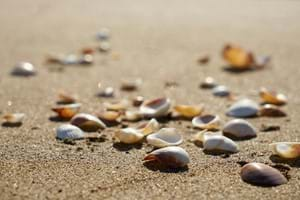What is beachcombing?

Beachcombing involves 'combing' the beach to see what things of interest you can find.
In these technology focused times, activities like beach combing have become forgotten about pass times. However, the act of beachcombing is extremely soothing and relaxing and something that’s worth a try to combat stress and anxiety caused by our technology focused busy lives. By combing the shoreline to see what objects of interest you can see you might find shells, pebbles, sea glass.
BBC’s Country File suggests that you might also find one of the more unusual treasures listed below:
Mermaid's purse (dogfish case) - Also known as a dogfish case, a mermaid's purse is essentially the egg case of a dogfish or small-spotted cat shark, our most common shark. Usually, beachcombers will find empty purses, where the fish has already hatched and is living in the sea.
Keelworm tubes - are the chalky white scrawl often seen on washed-up pebbles, shells and fishing gear. Like the barnacles, each tube has an aperture and at high tide the tubeworms extend crowns of elegant, often colourful tentacles to feed. They are sedentary and unable to leave their tubes, but gregarious, as the larvae congregate to form colonies.
Piddock holes - ‘Boring mollusc’ drill perfectly round holes with their long shells. Once the piddock has drilled a hole this forms a safe tunnel for it to extend a siphon used to filter food from the sea water.
What do you need to take beachcombing? Check the tide times, a bag for any finds, a phone or camera, wellies and warm clothes. It’s also a good idea to take a book like The Essential Guide to Beachcombing to help identify your finds.
When is the best time to go beachcombing? Any time is fine, but there are usually richer pickings after storms.
Please beach comb responsibly
Under the Coast Protection Act 1949, it is unlawful to take any natural materials from any beach in the UK, including sand and pebbles. While it isn't illegal to take driftwood or seashells, many beaches discourage the collecting of these materials as they provide an essential habitat for wildlife and form an important part of the coastal ecosystem.
Find out about more family activities at the Yorkshire Coast by signing up to our newsletter.

